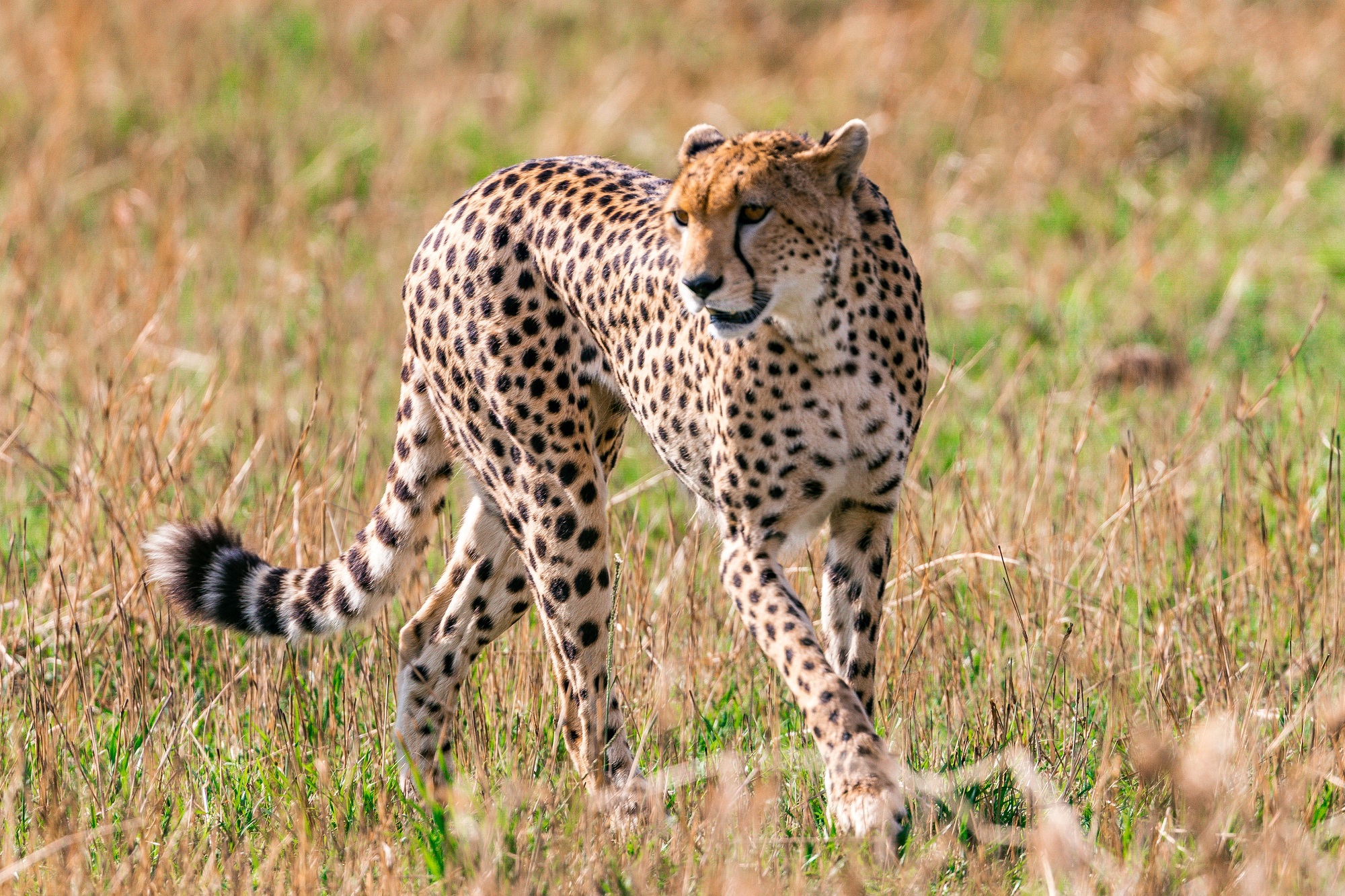The cheetah is the world’s fastest land animal, but their speed hasn’t let them outrun possible extinction. In the wild, cheetah numbers are reducing at rapid speeds, and it’s crucial now more than ever that we protect the few thousand individuals that are left in the wild.
This article will cover everything you need to know about the cheetah, including its characteristics, the different cheetah subspecies, how cheetahs behave in the wild, and their unique hunting techniques.
What Is the Cheetah?
The Cheetah (genus Acinonyx jubatus), which is now native to central Iran and Africa, is best known for its speed, distinctive coat, and slender body.
You see, when cheetahs hunt, they can reach speeds of 75 miles an hour, going from zero to 60 in just 3 seconds. This incredible acceleration speed, along with its top running speed, is what makes them the world’s fastest land mammal.
But as well as being impressively fast, wild cheetahs are also incredibly nimble as they’re able to make sharp, quick turns in order to hunt down their prey. Pretty impressive, right?
Most people consider cheetahs part of the big cat family; however, some scientists argue that to be a member of the exclusive club, a cat needs to know how to roar. For leopards, tigers, lions, and jaguars, roaring comes naturally, but sadly for the cheetahs, their roar is more, well, a purr.
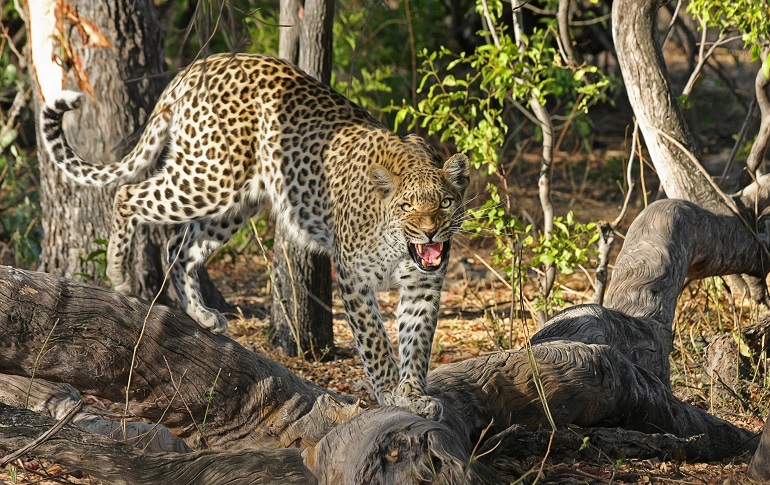
Over time wild cheetah populations have dwindled. Although historically, cheetahs roamed large portions of Africa and Asia, the International Union for Conservation of Nature now lists the species as vulnerable, with their habitat now confined to central, eastern, and southern Africa and a small section of Iran.
With as few as 7,000 cheetahs left in the wild, it won’t be long until their status rises from vulnerable to endangered species.
Etymology
The cheetah gets its name from Hindustani Urdu: چیتا and Hindi: चीता (ćītā), which originally came from the ancient Indian language of Sanskrit. In Sanskrit, चित्रय (Chitra-ya.) means ‘painted’ or ‘variegated,’ which is a direct reflection of the cheetah’s distinguishing coat.
A cheetah’s generic name, Acinonyx jubatus, comes from both Greek and Latin language. Acinonyx is the combination of two Greek words, ἁκινητος (akinitos) and ὄνυξ (onyx), with akinitos standing for motionless and onyx standing for nail or hoof.
When we translate the word combinations, we’re left with immobile nails, which describes the cheetahs not having fully retractable claws.
The second half of the name jubatus we can translate from Latin to ‘crested, having a mane.’ And I know what you’re thinking, do cheetahs have manes? Well, yes. Male cheetahs have a mane on their shoulders, and although it isn’t as impressive as a lion’s, it’s still a mane nonetheless.
Taxonomy
Johann Christian Daniel von Schreber, in 1777, gave the cheetah the scientific name Felis jubatus, basing the name on a cheetah skin from the Cape of Good Hope, a rocky headland on the Atlantic coast of the Cape Peninsula in South Africa.
However, just over 50 years later, Joshua Brookes renamed the cheetah to its now generic name of Acinonyx jubatus.
Reginald Innes Pocock, a British zoologist, 1917, placed the cheetah in the Felidae family under the subfamily, Felinae. Felinaes are small cats, like cougars, lynx, and caracals, with a horseshoe-shaped bone in the neck, known as a hyoid, which prevents the cats from roaring.
Subspecies
The 19th and 20th centuries saw zoologists categorize cheetah specimens into different subspecies, and as of 2011, phylogeographic studies identified four separate subspecies.
Southeast African Cheetah
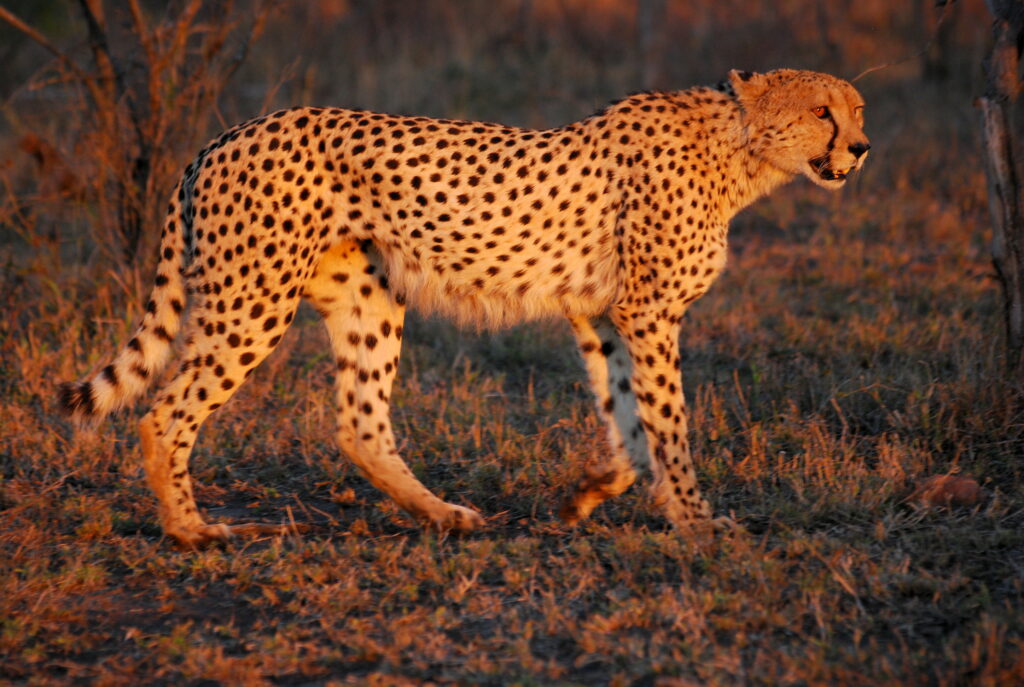
The first subspecies is the Southeast African, which underwent genetic changes to the Asiatic cheetah 67,000 years ago.
When it comes to cheetah subspecies, many people believe that there are technically five subspecies.
However, studies saw minimal genetic variations between the South African cheetah (Acinonyx jubatus jubatus) and the East African cheetah (Acinonyx jubatus fearsoni,) so the two were combined, and we now know them as the Southeast African Cheetah.
These are native to eastern and southern Africa, with most of the population living in the Kalahari, the Okavango Delta, the Transvaal region, and even Namibian farmlands.
Asiatic Cheetah
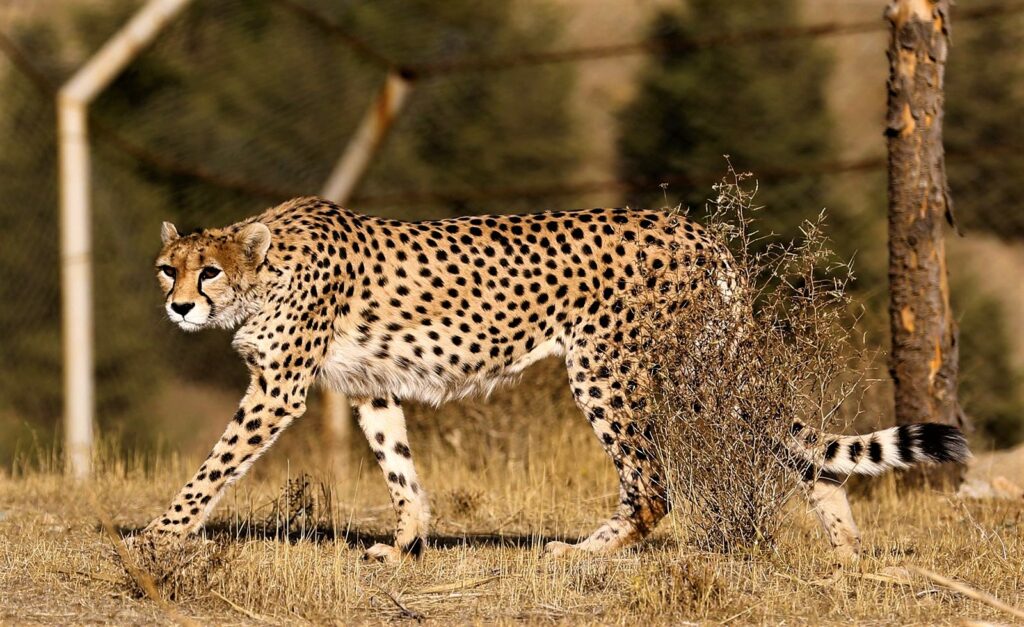
The Asiatic cheetah (A. j. venaticus) lives only in central Iran, and today they’re the only surviving cheetah population throughout Asia.
It wasn’t until 2011 that the Asian cheetah became its own subspecies. Before geneticists gathered and analyzed 94 samples, they believed that the Asiatic cheetahs and the African cheetah genes were identical.
Studies in 2022 estimate that only 12 of the Asiatic cheetahs live in Iran, putting the subspecies on the critically endangered list.
Northeast African Cheetah

The Northeast African species (A. j. soemmeringii) lives in Chad, Ethiopia, the northern Central African Republic, and South Sudan.
Up to 72,000 years ago, the Northeast African cheetah began genetically diverging from the Southeast African cheetah. In 2007, it was estimated that roughly 950 Northeast African cheetahs were left on Earth.
Northwest African Cheetah
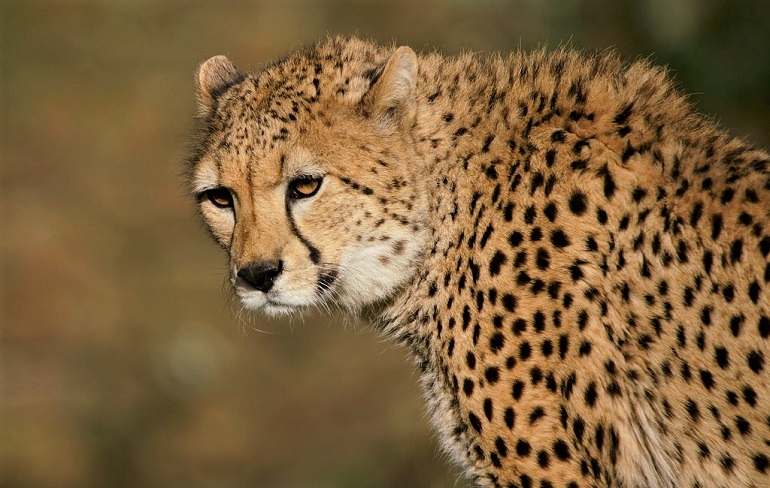
The final subspecies is the Northwest African cheetah which is native to the Sahara and the Sahel.
Their populations have declined rapidly over the years, and in 2008 there were less than 250 of the subspecies left. Their extremely low population has meant that the ICUN has placed the Northwest African cheetah on the critically endangered list alongside the Asiatic cheetahs.
Genetics
The cheetahs have 38 complete chromosomes; however, studies show low genetic variability, likely caused by two population bottlenecks 100,000 years ago and 12,000 years ago.
Population bottlenecks are caused by famines, earthquakes, disease, and droughts.
In terms of the cheetah, when a population bottleneck occurs and a large percentage of the cheetah population dies, the cheetah species gene pool would be far smaller, inbreeding would become more common, and the limited genetic diversity would be passed down to future generations.
The cheetahs’ low genetic diversity has caused issues for the species as male cheetahs have increased sperm defects, cubs are at risk of juvenile mortality, and in general, cheetahs are more susceptible to diseases and infections.
These issues combined have caused breeding in captivity to be highly unsuccessful and numbers in the wild to reduce rapidly.
King Cheetah
In 1926, Major A. Cooper first documented the King cheetah, describing it as a cheetah-like animal but with fur as thick as a snow leopard and spots that merged together to form stripes.
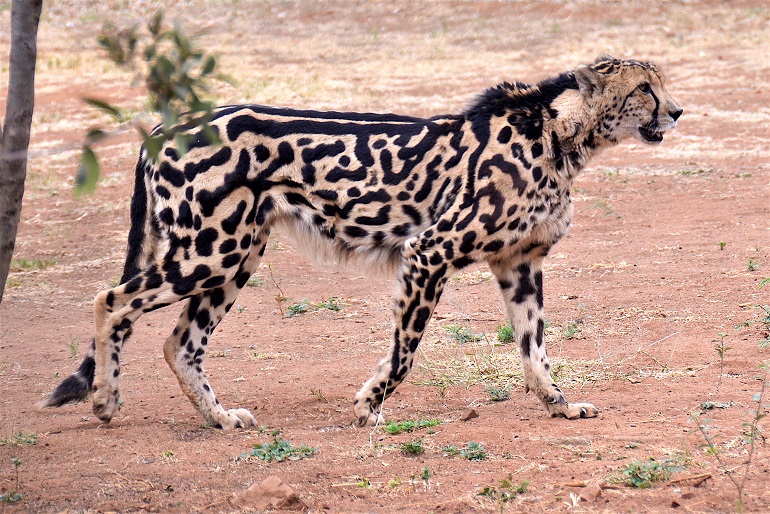
Initially, he thought the animal could be a cross between a cheetah and a leopard, but as scientists began to observe more individuals, they saw that the cat had non-retractable claws like cheetahs.
A year after the first sighting, zoologist Reginald Innes Pocock categorized the species as a new species with the name Acinonyx rex or King cheetah. But with very little proof to support that the cheetah was, in fact, different from other species, Pocock retracted the proposal in 1939.
Since its first sighting, the King cheetah has been reported only five more times in the wild, with only one photographed in 1975.
In captivity, however, the story is very different. In 1981 at the De Wildt Cheetah and Wildlife center, two cheetah adult females mated with a wild male cheetah from Transvaal and gave birth to one King cheetah cub each.
The births at the center led to studies on the King cheetahs, and it was found that the spotted coat pattern of a King cheetah is caused by a mutation in the gene for transmembrane aminopeptidase (Taqpep).
The Taqpep gene is the same gene that gives tabby cats their striped pattern. These studies have shown that if two cheetahs are heterozygous carriers of the mutated allele, then 25% of their cubs born are King cheetahs.
King cheetahs are easy to tell apart from regular cheetahs as they have cream-colored fur with large spots and three wide and dark stripes that run from their neck to their tail.
Characteristics of Cheetahs
Cheetahs are spotted cats with small rounded heads, short snouts, and black streaks in their fur that run from their eyes to the corners of their mouths.
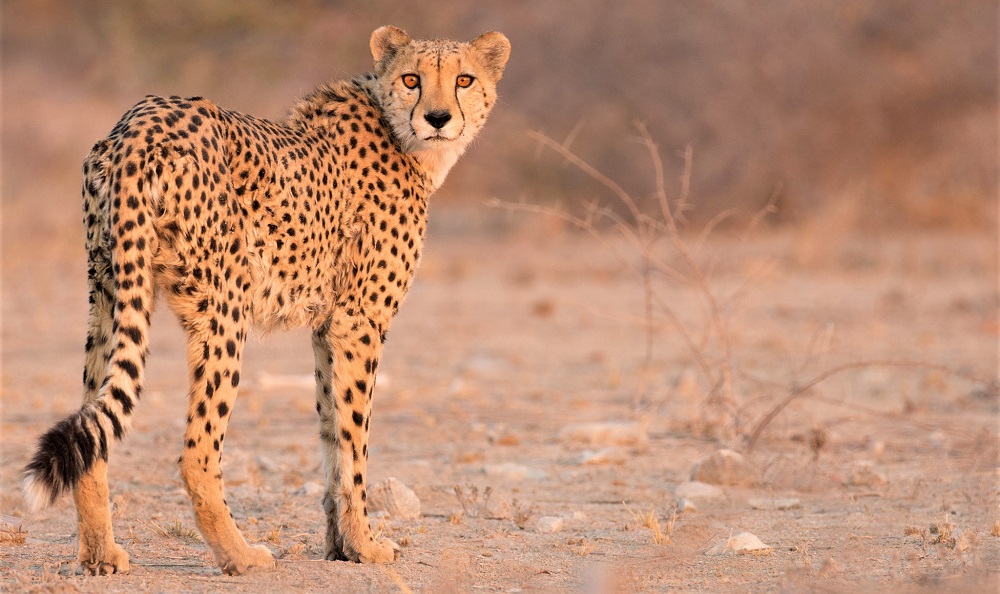
Their short, coarse coats are tawny or creamy white, and although a large portion of their body is covered roughly with 2,000 oval or round spots, the fur under their chin, throat, belly, and under their legs is white and free from any markings.
Just like you and I, no cheetah is the same, and we can use their unique spot patterns to identify one individual from the next. If you look closely at a cheetah’s fur, you’ll also notice that they have additional irregular black marks on their coat that don’t resemble the shape of their usual spots.
Ultimately the cheetah is built for speed, and its long, thin legs, lightly built body, and long tail all help them hunt.
Depending on the subspecies, age, sex, and location, adult cheetahs can be anywhere from 67cm to 94cm tall at the shoulder and weigh 34 to 64 kilograms. As with other large cats, male cheetahs are larger and heavier than females; however, not to the same extent as you would see in lions or tigers, for example.
As young cubs, cheetahs are born weighing up to just 300 grams and sport fur of a dark appearance; however, their fur lightens, and their spots become more evident when they age.
Getting a leopard and a cheetah confused is an easy mistake; I know I used to make it time and time again, but there are some easy ways to tell the difference.
- Leopards have larger heads.
- Cheetahs can’t fully retract their claws, whereas leopards can.
- A leopard’s markings are rosettes (rose-shaped), unlike cheetahs, whose markings are oval or round.
- A cheetah has black tear marks running from its eyes to the corner of its mouth.
- Leopards are bigger than cheetahs as they can be over 6 feet long, whereas cheetahs typically measure 5 feet long.
Internal Anatomy
The internal anatomy of a cheetah sets it apart from other big cats as cheetahs, the fastest land animal, have various adaptations to their morphology to help them chase their live prey species. Here are facts about the cheetah’s internal anatomy:
- A light and streamlined body helps to accelerate rapidly and change directions at fast speeds
- Semi-retractable claws to aid in traction
- Long tail to act as a rudder for balance and steering
- Large nasal passages oxygenate the blood, which is then carried to the animal’s enlarged heart and lungs
- Long and flexible spine
- Long legs with large thigh muscles and tibias and fibulas that are close together to improve balance
Speed and Acceleration
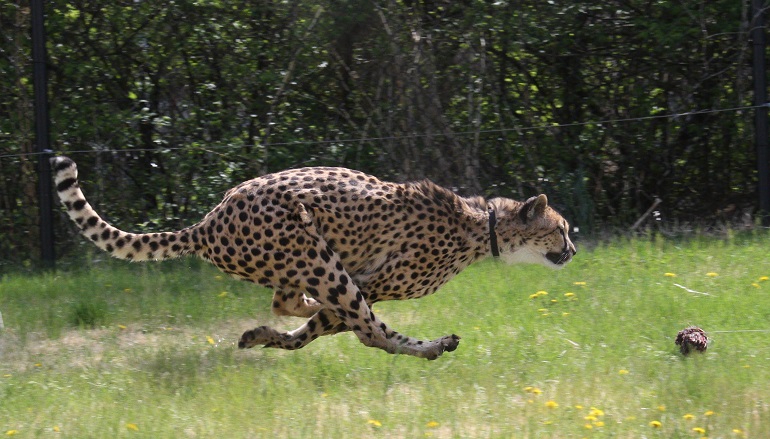
Cheetahs can run up to 80 mph at full speed; however, for most of their chase, they’ll run at lowers speeds with short bursts of peak speeds.
The first phase of cheetah hunts is done with fast acceleration, and during the second phase, when the cheetah is actually closing in, it’ll slow down and prepare to pounce.
Ecology and Behavior
Many carnivores like lions and leopards are nocturnal predators, but lions, leopards, hyenas, and vultures can steal a cheetahs prey, or worse, kill cheetahs entirely, so to help avoid large predators, the cheetah in areas like the Okavango Delta, prefer to hunt during the day.
Where cheetahs reign as a top predator, like in the farmlands in Botswana and Namibia or in areas where daytime temperatures are scorching, cheetahs are more likely to hunt at night.
Social Organization
Male cheetahs, aside from fights over territory or females, are relatively amicable with one another. In contrast, young females, on the other hand, prefer to live in solitude at all times of the year other than in the mating season.
Female offspring are likely to stay in close proximity to their mothers for life, but male cheetahs will leave their mothers and claim territory elsewhere.
Some young males, usually brothers from the same litter with a few unrelated cheetahs, will group together and form coalitions to defend a territory and grant the group access to large amounts of females.
The male coalitions will, oddly enough, be affectionate toward one another, grooming each other, hunting together, and sharing kills.
Home Ranges and Territories
Here are some facts about a cheetah’s home range and territory.
- Female cheetahs occupy larger areas compared to adult males.
- In Namibia, a female’s home range averages 554 to 7,063 km2.
- Males are less nomadic than females.
- Some males, known as floaters, switch between having a territory and nomadism.
- When females enter a male’s territory, they will surround her and bite or snap at her if she tries to leave.
Communication
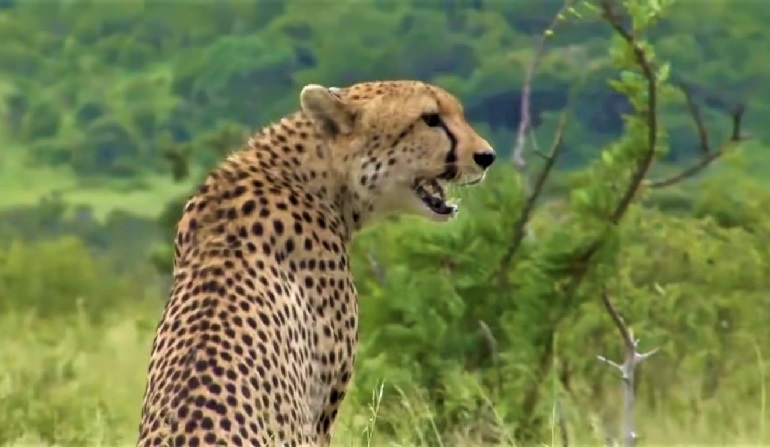
Cheetahs have different vocal characteristics as opposed to other cats and make chirping, purring, and churring sounds to show when they’re excited, to summon lost cubs, to greet other cheetahs, or to show they’re content when being groomed.
Other sounds, like growling, hissing, and moaning, can indicate that a cheetah has lost its kill to another predator or show that they’re uncomfortable or irritated
Diet and Hunting
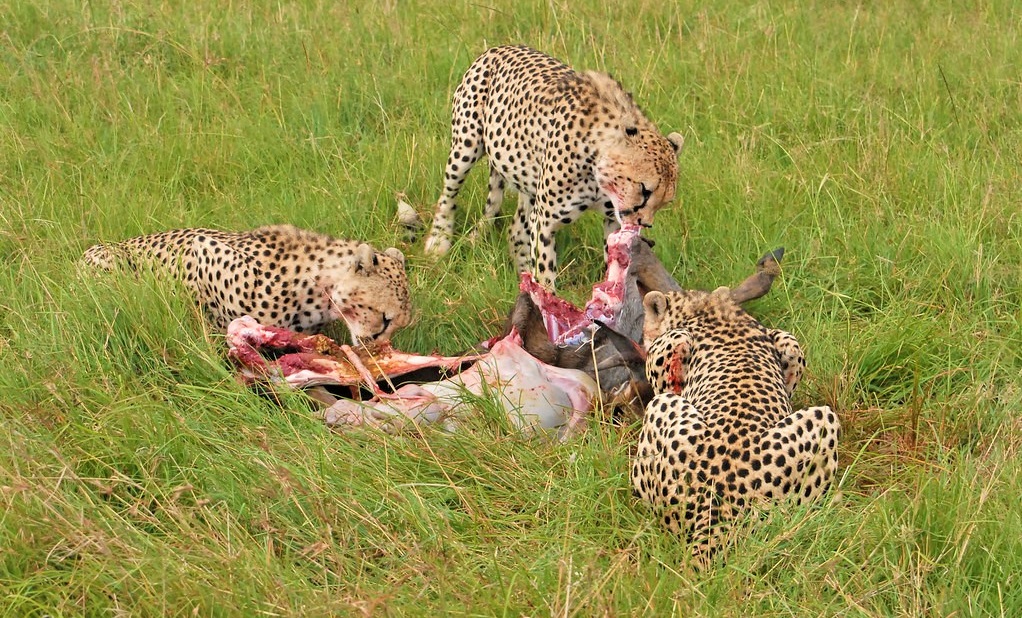
Cheetahs are carnivores who hunt small to medium-sized prey like gazelles, hares, impala, or antelope. However, coalitions or mother cheetahs with cubs will tend to look out for larger prey as they have more mouths to feed. They also feed on small mammals and birds.
Typically cheetahs will hunt throughout the day, with the odd hunt at sunset when the sun goes down and temperatures decrease.
Although many predators use their sense of smell to hunt, cheetahs use their vision and will keep a lookout for prey and stalk it from cover to get as close to it as possible.
When it’s time to catch prey, the cheetah will trip the animal by hitting its rump with its paw, knocking it off its balance, and bringing it down to the ground so it can bite down on its throat and suffocate it.
Sleep Habits
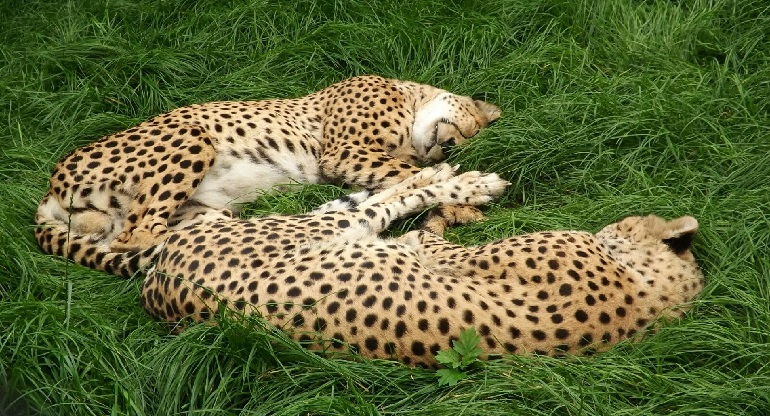
Cheetahs will sleep under large trees or in bushes where they can avoid the intense heat of the midday sun and shelter themselves from potential predators. On average, a cheetah typically sleeps 12 hours a day, waking up in the morning and evening to hunt.
Reproduction and Life Cycle
Cheetahs can breed throughout the year, with females being able to produce litters at two to three years of age. A female’s heat cycle will last, on average, for 12 days; once she has given birth, it will take 17 to 20 months for her to conceive again.
When a male has won the right to mate with a female, they will do so three to five times a day for two to three days.
Cheetah Life Cycle:
- Female cheetahs give birth to one to eight cubs after a three-month gestation period.
- Cubs will start walking at 2 weeks old.
- Mother cheetahs will move their cubs every five to six days to avoid being snatched by predators.
- Cubs will make their way out of their den at two months old.
- At four to six months, cheetah cubs will wean off their mother’s milk and begin eating solid food.
- Cubs as young as six months can start catching small prey.
- By 15 months, cheetah cubs can make successful kills of their own.
- At 20 months old, cheetah offspring gain independence and move away from their mothers.
Interesting Facts about Cheetahs
Here are five interesting facts about cheetahs:
- Cheetahs can give birth to one to eight cheetah cubs at a time; however, the average litter size is four.
- Cheetahs reaching speeds of up to 75 mph in 3 seconds makes them faster than most sports cars.
- In Ancient Egypt, the cheetah symbolized royalty and was often kept as a hunting companion by Pharaohs.
- The special paw pads are hard to help the grip on the ground.
- Cheetahs can only hunt their prey for 200 to 300 meters.
Distribution and Habitat
Cheetah species inhabit a range of connected habitat, preferring areas with good visibility, high amounts of prey, and limited larger predators. Here are where the four different cheetah species call home
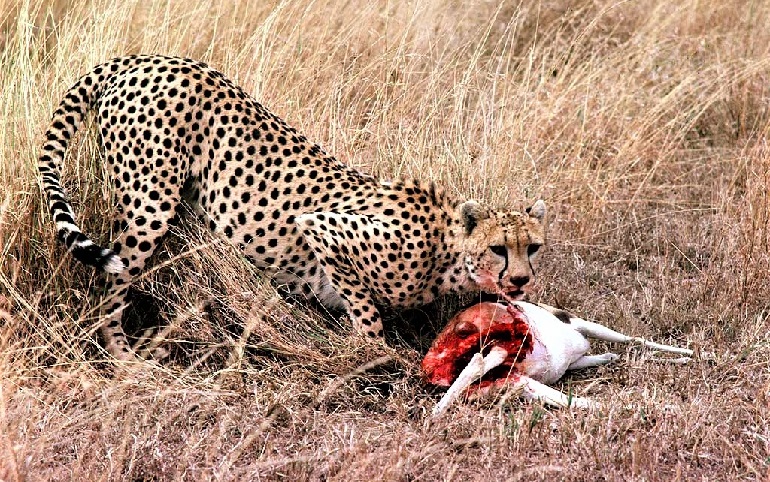
- Southeast African cheetah – savannas
- Asiatic cheetah – deserts
- Northeast African cheetah – open grasslands and savannas
- Northwest African cheetah – deserts
Historical Range and Present Distribution
Prehistorically, cheetahs lived all throughout Africa, Asia, and Europe, but now, their ranges are far less, and cheetah numbers have declined at high speeds.
Centuries ago, cheetahs would have lived from the Arabian Peninsula to India. However, the last wild cheetahs in India were shot dead in 1947, with the last cheetah sighting in the subcontinent occurring 10 years later.
Populations of cheetahs are dwindling everywhere, with the Asiatic seeing the biggest decline. In just 9 years, from 2007 to 2016, Asiatic cheetah numbers went from 100 to 43, and even more shockingly, that number is now believed to be just 12.
Due to the cheetah’s natural habitat being dramatically decreased, cheetah populations worldwide are now considerably smaller, with less than 100 individuals each.
Threats to Survival
There are various factors that threaten the modern cheetah, from habitat loss, environmental changes, and fragmentation of populations to shortage of prey and conflicts with other large predators.
In places like Namibia, cheetahs live largely in unprotected land, which has made them the target of farmers trying to protect their farm animals.
And if that wasn’t enough, the illegal wildlife trade, tribes using cheetah skins for ceremonies, and roadkill are all further threats that the cheetahs face each and every day.
How Long Do Cheetahs Live? (Lifespan)
In the wild, male cheetahs live between 10 to 12 years, with females living slightly longer. When cheetahs are bred in captivity, however, their lifespan is considerably more, with the oldest captive cheetah living up to 18 years old.
Conservation Status
The IUCN has listed the cheetah as vulnerable, whereas the Endangered Species Act classifies the cheetah as endangered.
Given the cheetah’s conservation status, there are now conservation programs in Africa and Asia to help raise the number of cheetahs on both continents. In 2022, eight cheetahs were even released into the Kuno National Park in India to see if the species could adapt to a new habitat.
Interaction with Humans
Taming
You may think taming a wild cheetah would be a difficult and dangerous task, but taming cheetahs is easy as they show little aggression toward humans. In fact, cheetahs have been tamed since the years of Ancient Egypt, where they were kept as pets and hunting companions for pharaohs.
In Captivity
The Zoological Society of London, in 1829, was the first zoo to introduce a cheetah into captivity. Over 140 years later, efforts were finally put into breeding programs to help improve cheetah populations.
Cheetah mortality in captivity, however, is high, with many deaths occurring due to stillbirths, birth defects, infection diseases, cannibalism, and maternal neglect.
Due to their low genetic variation, cheetahs are also vulnerable to stress-induced diseases, which can occur because of too many cheetahs in one place, exposure to the public, and movement between zoos.
In Culture
In different cultures, the cheetah is shown in a range of artistic works, including the following:
- The 16th-century painting of Bacchus and Ariadne shows two cheetahs pulling a chariot.
- In 1896, the Caress painting shows a women’s head on a cheetah’s body.
- In 1969, Joy Adamson wrote a biography for her pet cheetah, Pippa.
- The 1997 book, How it Was with Dooms tells the true story of a family raising a cheetah cub in Kenya.
FAQs
What Is the Average Weight of a Cheetah?
The average weight of a cheetah is anywhere from 34 to 64 kilograms, depending on the age and sex and the area where the cheetah lives.
How Fast Is a Cheetah?
A cheetah’s top speed is 75 miles an hour, and it can run from zero to 60 in just 3 seconds.
What Is a Group of Cheetahs Called?
A group of cheetahs is called a coalition. Coalitions typically consist of two to three males and are usually brothers from the same litter.
Conclusion
Cheetahs are truly magnificent creatures that don’t deserve to be on the brink of going extinct. Of all the large cats in the world, the cheetah is by far the most susceptible and vulnerable, and more efforts need to be made to save the remaining 7,000 individuals in the wild.
By raising awareness of the cheetah and their vulnerability and supporting efforts to improve cheetah populations, we can hopefully undo the damage, save cheetahs, and revive the species in their natural habitats.


